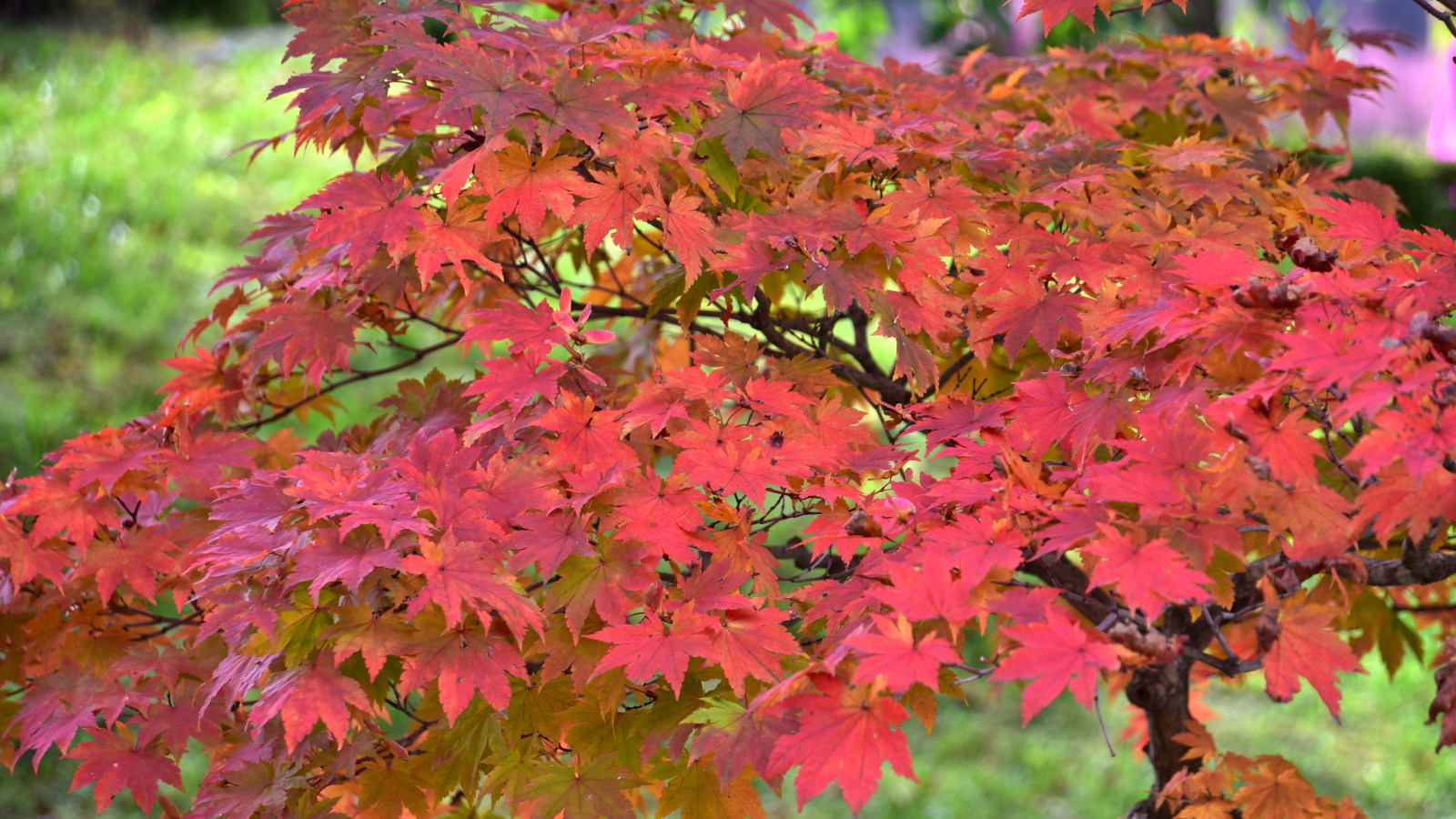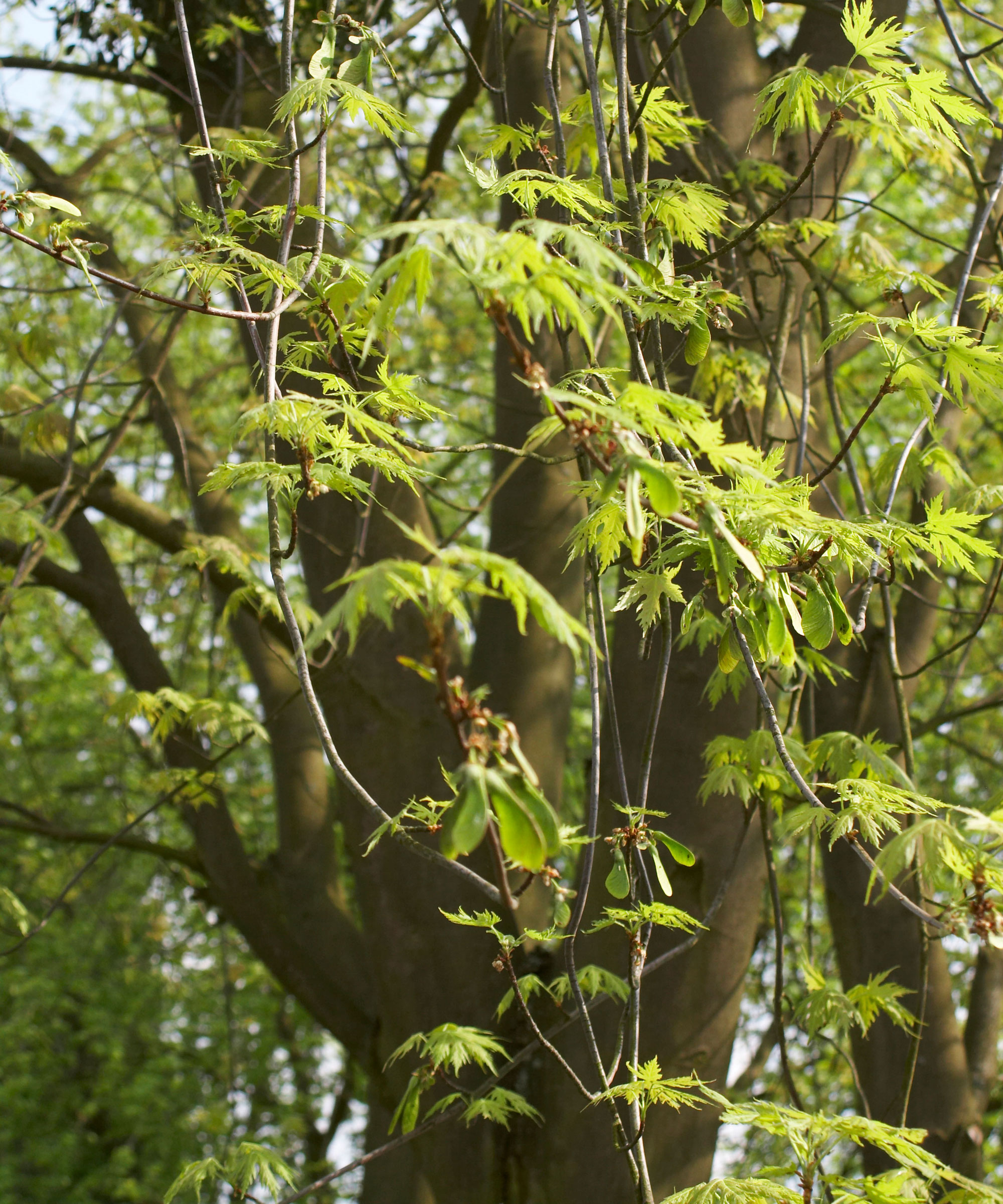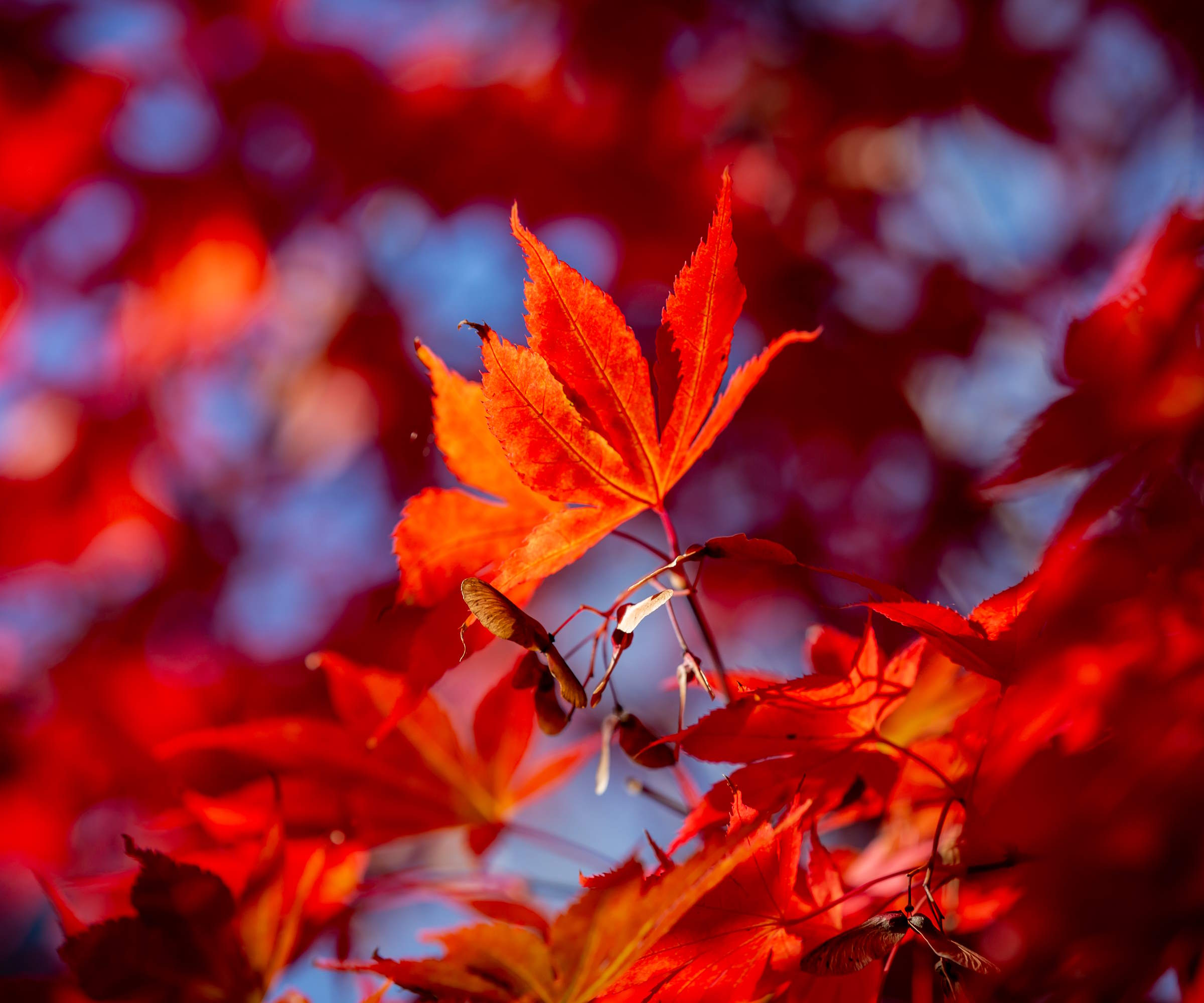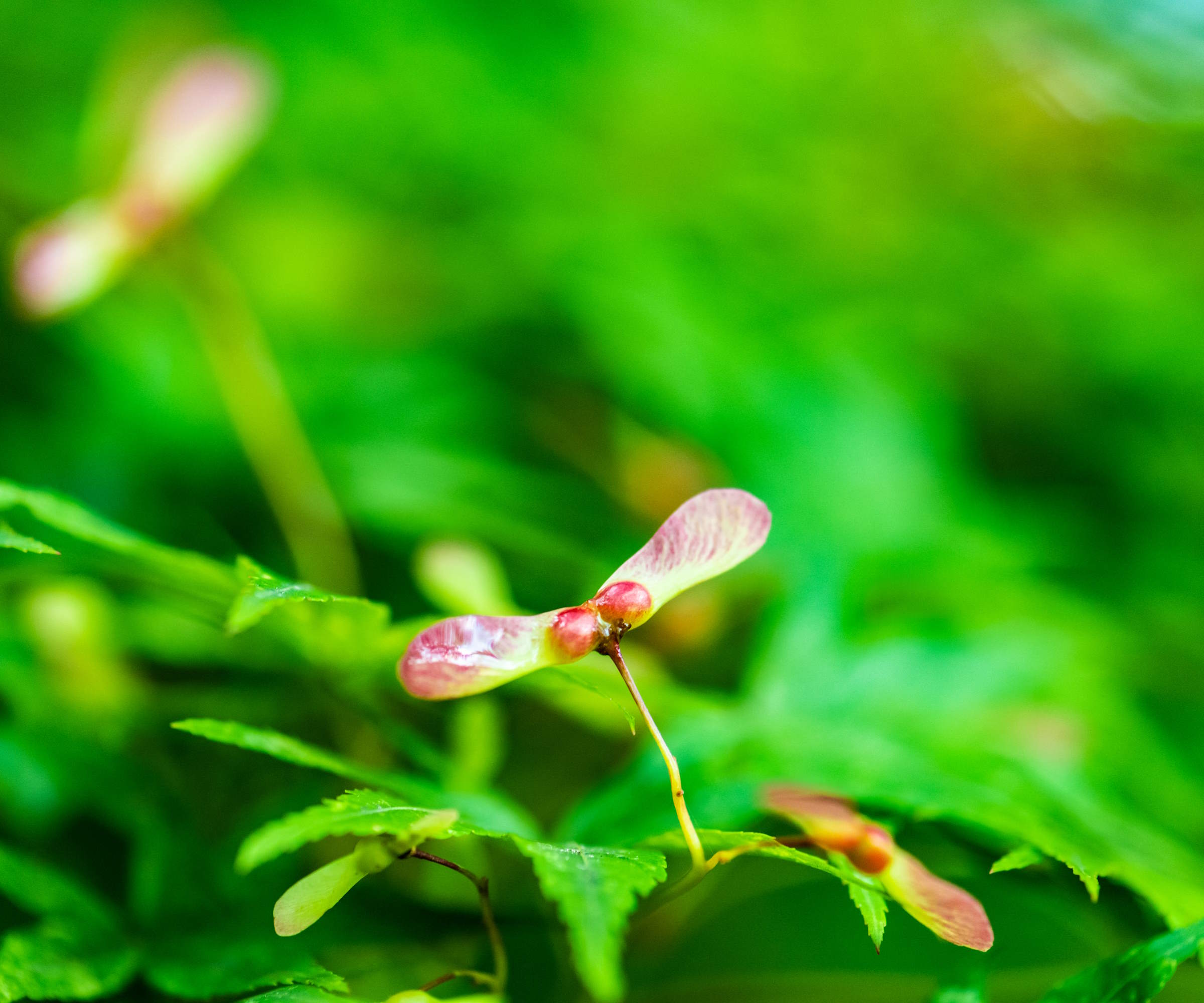
Japanese maple trees are perhaps the most popular small to medium-sized trees to grow in borders and pots. They are globally adored for their vibrant fall foliage display, with leaves changing from green to yellow, purple to pink, red to orange, and many more colors in between.
There are many different Japanese maple varieties, most of which are resilient and reliable trees for any yard. As a professional gardener, I have cared for many different varieties of Japanese maple, Acer palmatum, when managing gardens across the UK and Italy. One of my favorite varieties is Acer palmatum 'Red Dragon', renowned for producing deep purple leaves that turn crimson-red in the fall. In a pot, this variety is a dramatic addition to any space.
While Japanese maple trees are considered low-maintenance, many gardeners are unsure if fertilizer is necessary. Here, one expert gardener from the South Coast Botanic Garden, California, offers practical advice on how best to care for these stunning trees.

How to fertilize Japanese maples
Japanese maple trees generally grow best in US hardiness zones 5 to 8, tolerating winter temperatures down to -20°F/-29°C. These tough, hardy trees can be grown in borders or containers, and there are many impactful varieties well-suited to container displays, such as this Acer palmatum 'Atropurpureum', available from Nature Hills.
These compact trees thrive in partially shaded spots and can handle most soil conditions. Gardeners often ask whether it is necessary to fertilize established trees - here, but it is often not needed. If your tree is healthy and happily growing, I would caution against feeding it. However, there are one or two instances, such as growing in pots, when fertilizing is needed.
Do I need to fertilize Japanese maples?

'Japanese maples do best in woodland conditions - imagine the understory of a forest full of green, lush planting,' says Terry Huang, plant expert and Director of Living Collections at South Coast Botanic Garden in the Los Angeles area.
'They generally grow best with morning sun and afternoon shade, or dappled shade throughout the day,' Terry adds. 'In a woodland setting, these trees enjoy even and consistent moisture and loamy soil with good amounts of humus.
'They often suffer in exposed situations, especially in climates that are hot and dry,' Terry says. Patios, terraces or yards in full sun are not ideal for these trees. If your maple is struggling, looking sad or limp, it might be because of sun damage or dry soil, so always consider this before applying fertilizer. Any trees happily growing in a border in the right conditions should not need fertilizer.
'If the leaves are wilting and the soil is dry, give your maple a good watering. Gently soaking the soil over an extended period of say 30 to 45 minutes. This will allow the water to penetrate deeper and more thoroughly.
'Mulching is another gardening trick to consider before fertilizing, and will also help prevent water from evaporating too quickly,' Terry says. 'As it breaks down, the mulch will help to improve soil health and maintain ideal soil conditions. Organic mulch is available from Amazon.
It is also a good idea to test your soil, using a soil test, available from Amazon, which can help to inform you what your soil might be lacking in terms of nutrients and minerals.
'If the soil is moist and rich, but the leaves are limp during the day, wait to see if they recover by morning. If so, it is just a sign of heat stress.'
As Terry says, ascertain if your tree is in the right place, with the ideal spot being in dappled shade, and consider mulching your borders/containers. Even a thin layer of 1 to 2 inches of mulch can help to add nutrients and goodness to your soil and provide all that your tree needs to thrive, without the need for any fertilizer.
However, there are occasions when you should apply feed. For example, if you have completed the above checks and concluded that your soil is nutrient-poor, or if you are growing Japanese maples in containers, it is a good idea to fertilize these specimens, as their roots are restricted to a small, enclosed pot.
How and when to fertilize Japanese maples

'If soil conditions in your borders are nutrient-poor, fertilizing can be necessary for Japanese maple trees,' Terry continues. In addition, for those maples grown in pots, you should also apply a yearly feed, as the soil in containers can quickly become depleted of nutrients.
'If needed, use a balanced fertilizer formulated for trees,' Terry says, such as this organic tree feed from Amazon. 'Fertilizing is best done in spring through summer during active growth, but avoid feeding too close to fall. This is a common fertilizing mistake that gardeners make, but feeding too late can do more harm than good as plants prepare for dormancy.'
Alternatively, for a low-effort solution, use these tree spikes, available from Amazon, for a simple, quick way to feed trees in garden borders and pots. Firmly place the spikes within 2 feet of the base of your tree, and, over time, they will release nutrients into the soil.
'When growing in pots, it is a good idea to use high-quality potting soil,' Terry says. 'Wood-based mixes are ideal, combined with topsoil, either at a 1:2 or 1:3 ratio. This will help with micronutrients and water retention in your containers. When needed, fertilize your pots lightly 1 to 2 times a year in the spring and summer, using a tree feed.'
This tree fertilizer has all the goodness your trees need to thrive. Suitable for use with Japanese maples, dogwoods and all other backyard favorites.
FAQs
What is the best fertilizer to use for Japanese maples?
The type of fertilizer you use will be down to the preference of the gardener. Slow-release feeds are more preferable to me, as they gradually add nitrogen to the soil, meaning that you can feed once and forget about this summer gardening job. Quick release, water soluble fertilizers are rapid, but require consistent application. Whatever fertilizer works for you, ensure that it is formulated specifically for trees and shrubs.
Why not consider growing a Japanese maple from seed? While this does require patience and precision, with the right approach, you can bolster your maple collection in the years to come. If you're interested in adding new trees to your yard, you might find our guide on how to grow a ginkgo tree useful, for a Jurassic addition to the backyard.







